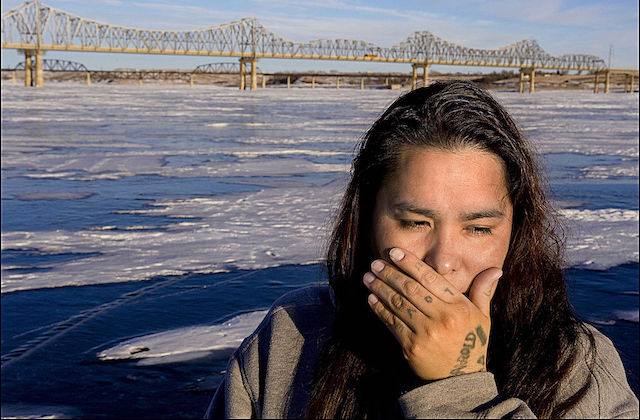Despite the work of the Me Too Movement to change how the nation talks about survivors of sexual harassment and assault, Indigenous women in the United States are still experiencing both in disproportionately high numbers. In a series of articles published this week by Indian Country Today, reporter Mary Annette Pember looks at how women are speaking out and building coalitions to enact change.
Investigated over a nine-month period, the series unfolds via three articles: “#MeToo in Indian Country; We Don’t Talk About This Enough, “What Happens When Native Women Come Forward” and “Toxic Masculinity; Addressing a Terrible Truth.” The series aims to counter the prevalent media coverage on sexual violence and harassment that, writes Pember, “focuses on the high rates of non-Native perpetrators and Native victims. While important, these articles fail to reveal the equally troubling stories about Native perpetrators who target Native victims.” She continues:
rnt
Framing Native peoples as victims and focusing on the fact that Native women are 2.5 times more likely than any other ethnicity in America to be sexually assaulted is a common thread in legacy media. The broader story, however, is decidedly messy and deeply human; 30-35 percent of perpetrators in sexual assaults against Native women are Native men.
Pember writes that Native women often don’t report what has happened to organizations or authorities—from school boards to human resource departments to the police—and breaks down the contributing factors:
rnt
“Constant racism, sexual and domestic violence, childhood trauma, lack of accountability from tribal law enforcement and court systems and not being believed if they do come forward has contributed to silencing Native women,” [Amanda Takes War Bonnet of the Native Women’s Society of the Great Plains] said.
Activist Sarah Deer points to another factor she believes keeps women silent:
rnt
“We’re already stereotyped as being dysfunctional; Native people may be fearful of adding to that perception by reporting harassment,” she said. “We don’t talk about this enough.”
The article goes on to speak to a number of women who have spoken out, with varying outcomes. One is Sarah Manning, a social science teacher and member of the Shoshone Paiute Tribe. She was sexually harassed by her employer at a school on a reservation in South Dakota that is controlled by the Bureau of Indian Education. She was ultimately able to have him terminated and prove that he’d harassed many other women. But not before she felt forced to resign:
rnt
Manning describes her experience as emotionally, physically and spiritually draining. “The reporting process utterly impoverishes victims,” she said.
t
“In order to change and move forward, we have to interrogate the soil of why this happens in Indian Country, of why there is a climate of victim blaming and denial,” she said.
Read the entire article here.
